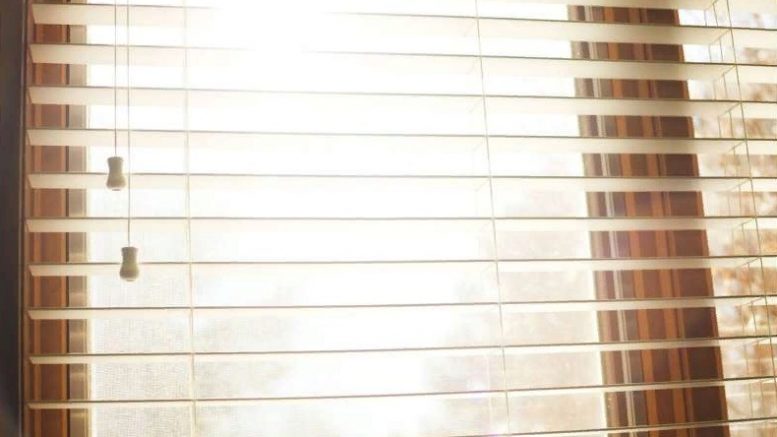According to a study, even moderate light exposure during sleep is harmful to heart health and promotes insulin resistance.
Before going to bed, close the blinds, draw the curtains, and turn out all the lights. According to a new Northwestern Medicine study, even moderate ambient brightness during nighttime sleep affects cardiovascular performance and raises insulin resistance the next morning, compared to sleeping in a poorly lit room.
“The findings show that even a single night of moderate room lighting during sleep might impair glucose and cardiovascular regulation, which are risk factors for heart disease, diabetes, and metabolic syndrome,” said senior study author and Northwestern Medicine physician Dr. Phyllis Zee. “It’s critical for people to avoid or limit their exposure to light during sleeping.”
The sympathetic nervous system, which throws your heart into high gear and heightens attentiveness to handle the challenges of the day, is already known to raise heart rate when exposed to light during the day.
“Our findings suggest that a similar effect exists when light is exposed during nighttime sleep,” Zee added.
The work will be published in the journal PNAS on March 14th.
In a light environment, the heart rate rises, and the body is unable to relax effectively.
Dr. Daniela Grimaldi, a co-first author and research assistant professor of neurology at Northwestern, said, “We found your heart rate increases when you sleep in a moderately illuminated room.” “Your autonomic nervous system is active even when you are sleeping. That’s not good. Heart rate and other cardiovascular indicators are usually lower at night and higher throughout the day.”
During the day and night, the sympathetic and parasympathetic nerve systems govern our physiology. The sympathetic nervous system is in command during the day, while the parasympathetic nervous system is in charge at night, when it is supposed to restore the entire body.
What role does nocturnal light play in diabetes and obesity?
Insulin resistance was discovered the morning after patients slept in a bright chamber, according to the researchers. Insulin resistance occurs when cells in your muscles, fat, and liver do not respond adequately to insulin and are unable to use glucose from your blood as an energy source. Your pancreas produces extra insulin to compensate. Your blood sugar level rises with time.
A previous study in JAMA Internal Medicine looked at a large group of healthy persons who were exposed to light while sleeping. According to Zee, they were more overweight and obese.
“Now we’re demonstrating a process that could be crucial in explaining why this occurs,” Zee added. “We’ve demonstrated that it has an impact on your glucose regulation.”
The study’s participants were unaware of the physiologic changes that occurred in their bodies during the night.
“However, the brain detects it,” Grimaldi explained. “It behaves like the brain of someone who has a light and fragmented night’s sleep. The physiology of sleep is not resting as it should.”
It is typical to be exposed to artificial light during the night while sleeping.
Artificial light exposure during the night, whether from indoor light generating equipment or from sources outside the home, is prevalent, especially in big urban areas. A large percentage of people (up to 40%) sleep with a bedside lamp or a light on in the bedroom on, and/or keep the television on.
The link between light and health is a two-edged sword.
“Light exposure throughout the day, in addition to sleep, nutrition, and exercise, is a significant determinant for health,” Zee said, “but during the night, we show that even low intensity of light can damage measurements of heart and endocrine function.”
Over the course of a single night, the researchers evaluated the effects of sleeping with 100 lux (moderate light) against 3 lux (dim light) on individuals. Moderate light exposure caused the body to become more awake, according to the researchers. The heart rate, as well as the force with which the heart contracts and the rate at which blood is transported to your blood arteries for oxygenated blood flow, increases in this state.
“These findings are particularly noteworthy for persons living in modern civilizations,” Zee added, “where exposure to indoor and outdoor evening light is becoming more ubiquitous.”
Zee’s top advice for sleeping with less light
(1) Do not switch on the lights. If you must use a light (which older individuals may require for safety reasons), use a low light that is closer to the floor.
(2) Color is essential. The brain is less stimulated by amber or red/orange light. Avoid using white or blue light, and keep it away from the individual who is sleeping.
(3) If you can’t regulate the light outside, blackout shades or eye masks can help. Shift your bed so that the sun isn’t glaring in your face.
Is it possible that my room is excessively bright?
“If you can see everything well, it’s probably too bright,” Zee added.
Co-first author Ivy Mason, who was a post-doctoral fellow at Northwestern at the time of the study and is currently a research fellow at Harvard Medical School, Kathryn Reid, Chloe Warlick, Dr. Roneil Malkani, and Dr. Sabra Abbott are among the Northwestern authors.
“Light exposure during sleep decreases cardiometabolic function,” according to the title of the study.





